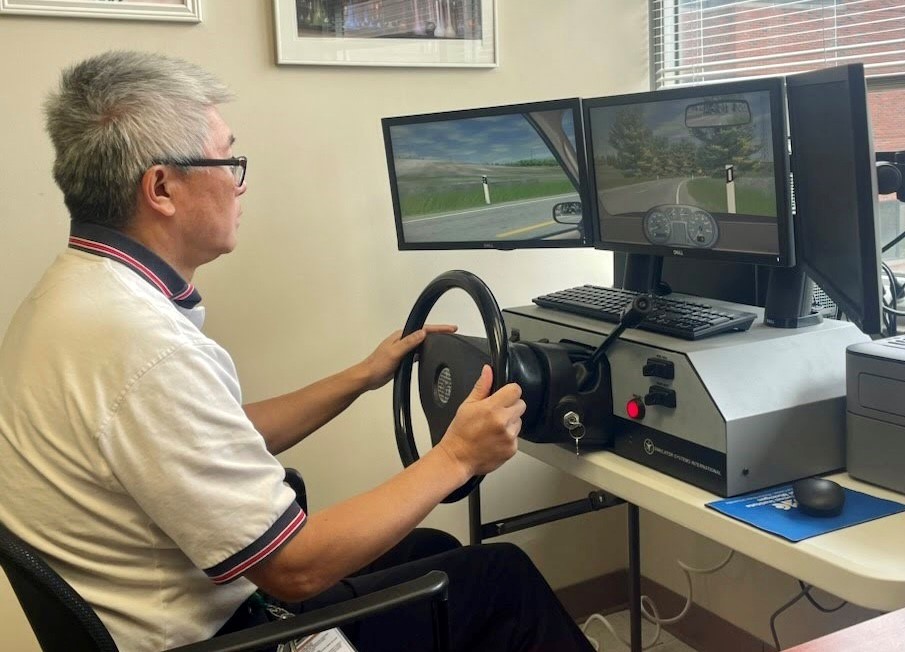 Driving is one of the hallmarks of a person’s independence, but people who experience moderate-to-severe traumatic brain injury (TBI) often have physical and cognitive deficits that limit their ability to return to driving. Such deficits might include response speed, maintenance of lane position, vehicle speed and stopping, response to distraction, attention to the roadway, identification of road hazards, and crash risk.
Driving is one of the hallmarks of a person’s independence, but people who experience moderate-to-severe traumatic brain injury (TBI) often have physical and cognitive deficits that limit their ability to return to driving. Such deficits might include response speed, maintenance of lane position, vehicle speed and stopping, response to distraction, attention to the roadway, identification of road hazards, and crash risk.
A new study launched by researchers at the Department of Physical Medicine and Rehabilitation aims to look at the value of using a driving simulator to predict on-road driving performance after TBI.
“We know that most people who return to driving after a TBI do so safely, and it has an enormously positive impact on mental wellbeing, sense of independence, community reintegration along with health and function,” says Instructor Jenny Marwitz, project co-director and the department’s Director of TBI Research. “And we know that the most common driving assessments are typically not designed to identify specific safety concerns that a person with TBI might have. We want to see if a driving simulator built to identify deficits is a good option. Then, we can work with therapists to develop strategies to target deficits.”
The driving simulator chosen for the study is a compact and economical option for most rehabilitation centers to implement into clinical practice. It offers a series of driving scenarios designed as distinct modules to simulate a specific driving task, environment, or situation that increases in visual and strategic complexity of the environment and strategic control. Participants have a first-person point of view of the interior rearview mirror and dashboard, along with full left to right exterior field of view, with side mirrors.
“Another goal is the development of guidelines for clinicians to help people with TBI return to driving, and do it safely,” adds Marwitz. “We think the compact simulator can be a more accessible and affordable way to make that happen.”
This study is the site-specific research project of the UAB Traumatic Brain Injury Model System.